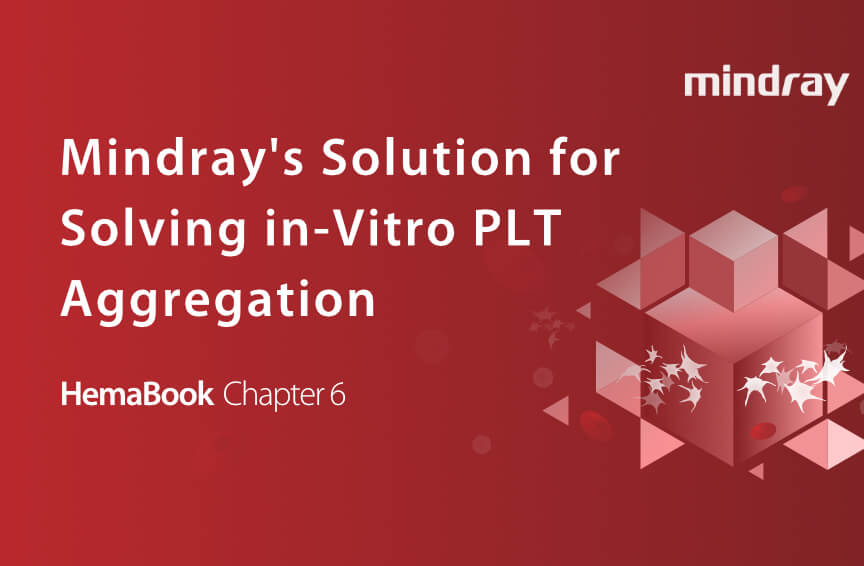EDTA-dependent pseudothrombocytopenia (EDTA-PTCP) induced by EDTA anticoagulants is a common laboratory phenomenon. It is caused by in-vitro PLT aggregation and may lead to a low PLT result and, ultimately, misdiagnosis and wrong medical treatment for the patient.
In the previous chapter ( The Stories of Platelet Clump), we looked at two clinical cases which initially had incorrect low PLT results using the traditional PLT measurement principle. After re-running the samples in the Mindray hematology analyzer using RET mode, PLT-O showed a more reliable result and finally gave the correct diagnosis.
Now, let’s explore how the Mindray solution solves the in-vitro PLT aggregation problem.
What are the critical factors of in-vitro PLT aggregation?
During PLT aggregation, PLT has three stages: inactivated PLT/activated PLT/ aggregated PLT. PLT activation is the most critical step for PLT aggregation.[1]
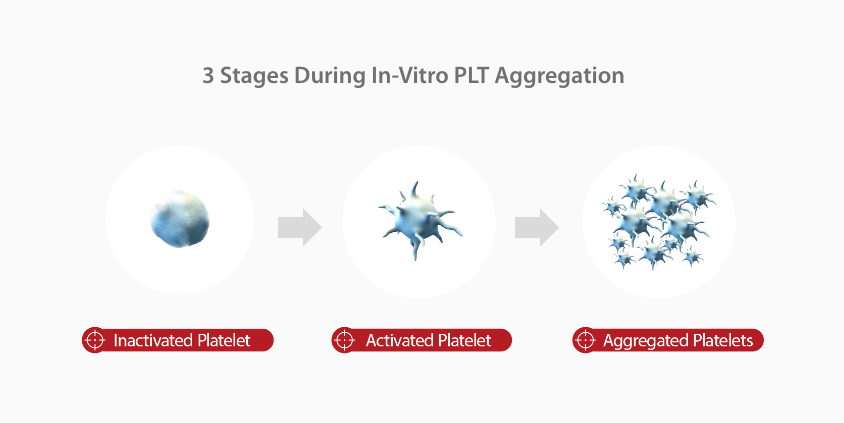
Thus, the PLT aggregation problem may be solved by blocking the PLT activation process. In order to discover the mechanism of PLT activation, we carried out a further exploration into the subcellular structure and cellular signaling pathway, and found there were three main regulatory pathways during PLT activation: the calciumion pathway, Tryosine kinases pathway, and glycoprotein GPIIb/IIIa pathway.[2]
In addition, the corresponding receptor antagonist research has been done to block the regulatory pathway to achieve the aim of PLT de-aggregation. Several different kinds of receptor antagonists have been tried and found to perform well in blocking PLT aggregation.
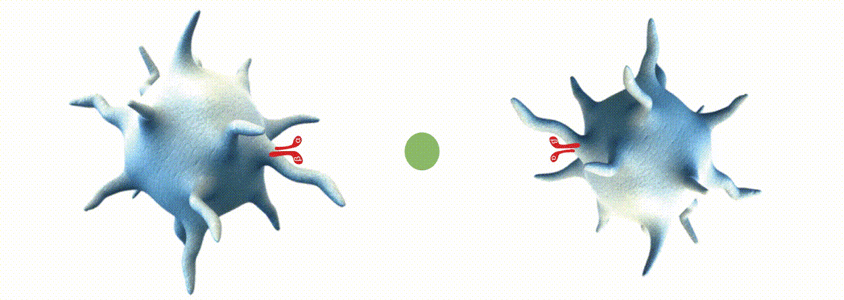
Fibrinogen and other factors
Without receptor antagonist (2 PLT gather together)
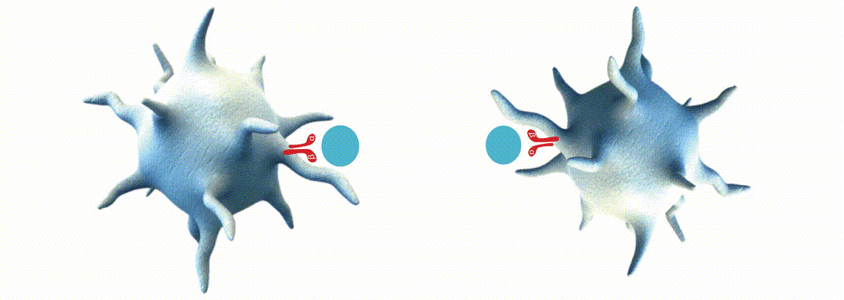
Receptor blockade
With receptor antagonist (cannot successfully aggregate)
As the data shown below, adding antagonists to samples sensitive to receptor antagonists before aggregation can prevent aggregation from happening; adding antagonists after aggregation can realize PLT de-aggregation as well.
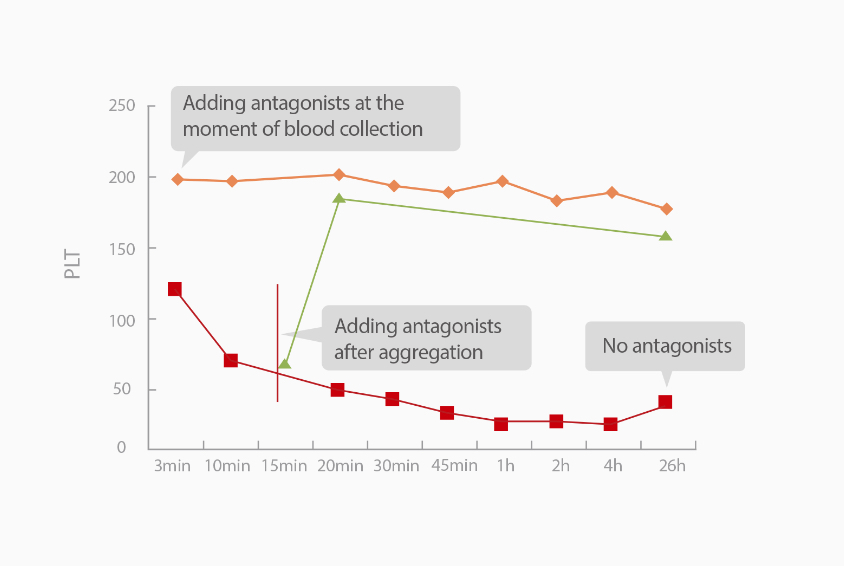
However, after testing different kinds of samples, there are still some samples that are not sensitive to these antagonists. This is because these antagonists can only target single regulatory pathway and have a limited effect on the other two pathways.
A further study was done by combining the molecular biology method to explore the molecular mechanism and different radical group characteristics. Ultimately, from thousands of potential chemical compounds, a series of optimal compounds were found which contain specific radical groups which are highly efficient at blocking the three regulatory pathways.


In order to further prove their effects on PLT de-aggregation using those antagonists, a comparison experiment was performed between control group and the group where antagonists were blocked. The experiment results are shown below:
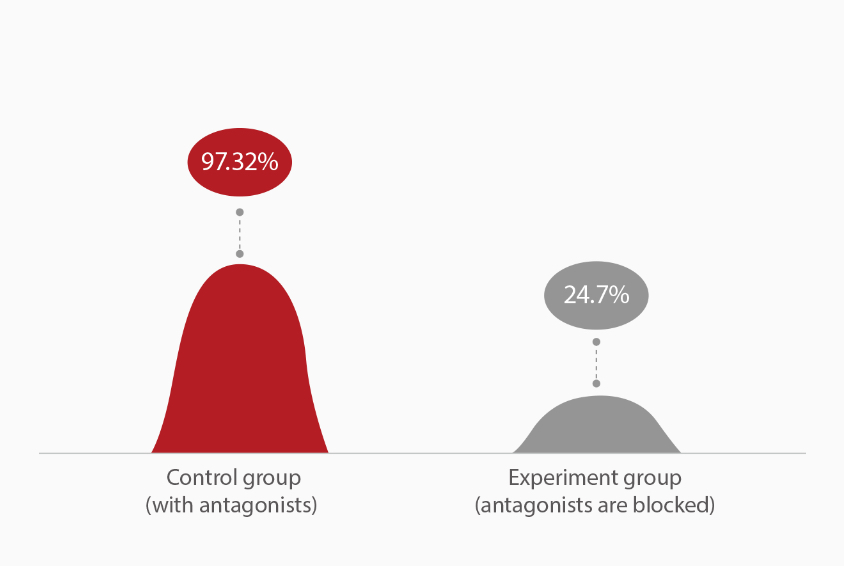
From the experiment, we have found that antagonists containing specific radical groups have an obvious effect on platelet de-aggregation.
Besides, there are also 3 critical factors (appropriate pH, temperature, mechanical mixing) that enhance the PLT de-aggregation. The superposition effect of these factors in de-aggregation is obvious. Thanks to the joint effects of multiple factors, the aggregation platelets are de-aggregated, and a reliable platelet value is obtained.
The PLT de-aggregation function was used in BC-6800/BC-6200/BC-6800Plus/CAL 6000/CAL 8000 in RET mode. Click here to learn more about the products.
References:
[1] The Platelet Membrane Glycoprotein IIb/IIIа Complex, David R. Phillips, etc.,Annals of the New York Academy of Science(509), 177-187
[2] Ilya Reviakine. New horizons in platelet research: Understanding and harnessing platelet functional diversity[J]. Clinical Hemorheology and Microcirculation,2015,60:133-152
